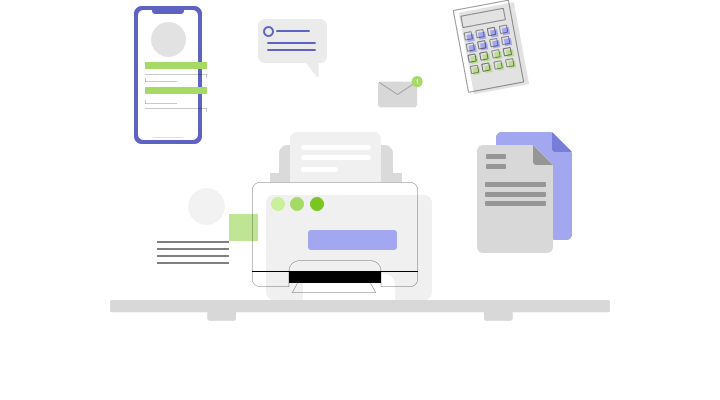
When production increases, the cost is spread over a greater number of products. Fixed costs do not change much when incremental costs are included, so the cost of equipment does not fluctuate as production increases. Understanding incremental costs is figuring out how much more money you need to invest if you make an extra unit of your product or deliver an extra unit of services. Incremental cost analysis is often used to analyze business segments to determine their profitability. All fixed costs, such as rent, are omitted from incremental cost analysis because they do not change and are generally not specifically attributable to any one business segment.
Incremental Cost Decisions
To increase the sales to gain more market share, the company can leverage the lower cost per unit of the product to lower the price from ₹ 25 and sell more units at a lower price. As a result, the total incremental cost to produce the additional 2,000 units is $30,000 or ($330,000 – $300,000). Understanding incremental costs can help a company improve its efficiency and save money. Incremental costs are also useful for deciding whether to manufacture a good or purchase it elsewhere. Online shopping has gained pace, and we have at least once added something to the cart and thought of buying it at some point in the future. This example does not take into consideration the factors of depreciation and taxes.
Navigating Crypto Frontiers: Understanding Market Capitalization as the North Star
For example, if a furniture manufacturer increases production by 1,000 chairs, it must account for the cost of extra wood, fabric, and incremental cost metal fasteners. Bulk discounts may reduce per-unit costs, but material waste or defects can offset savings. The incremental costs are used to calculate the point at which a company can maximize its profits or when margin costs equal marginal revenue. A business will make a profit if it earns more revenue per product (or marginal revenue), than the costs of buying or manufacturing that product.

Incremental cost: How to calculate and use it for decision making
Once relevant figures are determined, compare the financial outcomes of each alternative. This involves calculating the net impact by subtracting relevant costs from revenues. Opportunity costs, such as reallocating resources to more profitable ventures, should also be considered. Metrics like contribution margin and return on investment (ROI) can aid in this step. This is because fixed costs are not relevant to the decision of whether or not to pursue a new project or venture. Once you have determined the variable costs, you can calculate ICC by adding up all of the variable costs.
A leveraged buyout (LBO) is a transaction in which a company or business is acquired using a significant amount of borrowed money (leverage) to meet the cost of acquisition. Incremental cost guides you in choosing when to make your product and when to outsource. Often, it is more cost-efficient to outsource from a specialty company instead of doing it from scratch. In the realm of business, the unearned revenue strategic alignment of products can be a transformative force,…
- Similarly, direct labor costs rise as more workers or additional hours are required for higher production demands.
- The cost of producing 15,000 units is $120,000, meaning the additional cost to expand your production to this level is at an incremental cost of $20,000.
- By understanding the incremental cost, businesses can determine the optimal quantity to produce or the most profitable pricing strategy.
- TranZact is a team of IIT & IIM graduates who have developed a GST compliant, cloud-based, inventory management software for SME manufacturers.
- Once relevant figures are determined, compare the financial outcomes of each alternative.
- Let’s say, as an example, that a company is considering increasing its production of goods but needs to understand the incremental costs involved.

To finance Bookkeeping for Chiropractors a new project, for example, it may need to take on debt or sell more equity. The cost of each additional unit will be different, and the company must weigh the pros and cons of each option to decide which is best. It is similar to marginal cost, except that marginal cost refers to the cost of the next unit. This means the cost of production to make one shirt is at $10 in your normal production capacity. To give you an idea of how knowing your incremental and marginal cost leads to better financial planning, let’s get back to the shirt business example.
Advantages of Incremental Revenue
- Incremental reasoning does not mean that the firm should accept all orders at prices, which cover merely their incremental costs.
- This concept is critical when businesses assess the financial viability of producing additional units.
- Luxury car manufacturers invest in superior materials and craftsmanship, raising production costs.
- It allows businesses to assess the impact of a specific action or decision on their overall costs and profitability.
- Training costs may arise if new hires require onboarding, especially for specialized roles.
- The new product only added some extra cost to define ‘X’ as the primary user and ‘Y’ as the incremental user.
The tobacco business has seen the significant benefits of the economies of scale in Case 3. The incremental cost was kept lower at $70,000 while producing twice its production capacity, leading to a higher net income. The first step in calculating the incremental cost is determining how many units you want to add to your normal production capacity. Profitable business decisions include knowing when is the best opportunity to produce more goods and sell at a lower price.
Depreciation schedules, investment tax credits, and deductions influence overall cost efficiency. Tax Cuts and Jobs Act (TCJA), businesses benefit from 100% bonus depreciation on qualified property, reducing taxable income in the year of purchase. Section 179 expensing provides additional flexibility for smaller firms, allowing immediate deduction of asset purchases up to a specified limit. Understanding these provisions helps companies optimize after-tax returns while maintaining compliance with IRS regulations. Incremental cost is the total cost incurred due to an additional unit of product being produced. The Incremental Cost-Effectiveness Ratio (ICER) compares the relative costs and outcomes of two or more treatment options.

